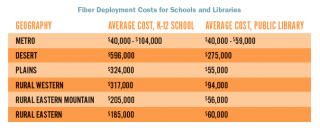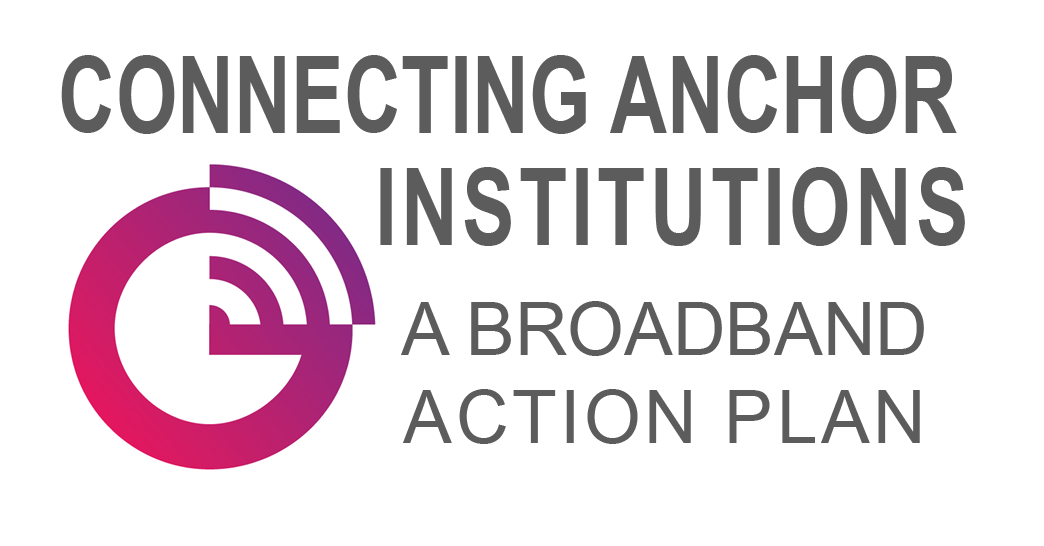Rural Broadband Programs and Community Anchor Institutions
Summary
Rural broadband networks require significant investment to cover high deployment costs and ongoing operations. More than 39 percent of rural Americans lack adequate access to broadband service, compared to only 4 percent in urban areas. In the absence of a sustainable business model for rural broadband deployment, policymakers should provide enhanced financial incentives to attract private sector investment. Policymakers should permit open access and interconnection to facilitate the entry of new providers and implement service obligations to ensure recipients of government funding provide CAIs with high-capacity broadband.
Read Full Policy PaperRecommendations for Action
The following policies would improve the ability of community anchor institutions in rural areas to have broader access to robust, scalable broadband:
- Federal, state, and local broadband funding programs must focus on the high-capacity broadband needs of community anchor institutions.
When promoting, incentivizing, or subsidizing deployment of broadband infrastructure in rural areas, governments should clearly and specifically include service to community anchor institutions. Further, the unique broadband needs of community anchors, in terms of speeds and quality of service, must be taken into consideration, as they are different from residential or small business broadband needs. Governments should oversee and enforce requirements to serve anchor institutions’ broadband needs.
- Governments should increase their financial support for rural broadband networks to make it more financially attractive for private sector investments in rural networks.
Because of the high costs of deployment in rural markets and the lack of population density, the private sector is unlikely to invest in rural broadband networks without additional financial incentives. Some options for increasing incentives include:
- The FCC should increase the rural discount factor for the E-rate program to provide greater funding for rural schools and libraries especially in “remote” rural areas and tribal lands.
- State and federal programs that fund broadband investment should include the needs of anchor institution connectivity and consider issuing grants and loans that support build-out to rural anchor institutions (as in Minnesota and Maine).
- The FCC should consider following through on the National Broadband Plan recommendation to create a Tribal Broadband Fund to promote deployment and adoption in tribal areas.
- Programs designed to promote broadband infrastructure in rural areas should encourage sharing and joint use of network facilities.
Network sharing can drop the per-unit cost of connecting community anchor facilities significantly and dramatically. Unfortunately, many existing broadband programs either prohibit sharing of infrastructure or impose complex regulation of sharing arrangements that make them extremely difficult to implement. For example, FCC universal service rules for schools, libraries, and rural health providers discourage institutions from leasing excess capacity for other uses on a subsidized network.36 Oddly enough, this limitation on sharing applies even among community institutions—a school that has an E-rate funded fiber connection is limited in its ability to resell capacity on that connection to a rural health provider. State and federal policymakers who wish to help bridge the rural connectivity gap should follow the example set by Congress in the public safety context and require that, to the maximum extent economically feasible, community institutions should share network infrastructure and projects with one another and the neighboring business community.
- The FCC Rural Health Care Program should be reformed and modernized so the connectivity needs of rural health providers are fully addressed.
The FCC should:
- Increase the 65 percent cap on funding from the Healthcare Connect Fund to 85 percent.
- Encourage shared capacity between health care providers, other community institutions, consortia, and public-private initiatives.
- Support consortia that include non-rural health facilities, so as to promote the use of urban-rural telemedicine solutions such as remote patient monitoring and specialist consultation.
- Governments should promote greater competition for service in rural areas through open interconnection and service obligations.
Opening rural broadband networks to interconnection and allowing government funding to non-traditional entities can stimulate greater investment by new providers. This competitive dynamic can also help to lower broadband prices to more affordable levels.
- Governments should take greater efforts to promote broadband connectivity to anchor institutions in tribal lands.
Several goals have been established to improve broadband services on tribal lands, but there is little evidence that these recommendations have been implemented. The Federal Government should immediately take action to implement the Broadband Opportunity Council recommendation to launch an interagency initiative to promote technology for tribal schools, and the Federal Government should also consider a tribal Broadband Fund as suggested by the National Broadband Plan. In addition, the FCC should establish robust connectivity goals for tribal schools, libraries, and health care centers through the E-rate and Rural Health Care programs, and collect and publish data that track progress on these goals.
Examples/Case Studies
| 2016 | Minnesota's Border-to-Border Broadband Development Grant Program | Website |
| 2015 | University of Maine RFP |
Graphs and Data
Additonal Research
- American Library Association, Broadband Quality in Public Libraries: Speed Test Results, April 2015. Documenting and analyzing public library technology infrastructure and how it is used to enable digital inclusion in communities nationwide http://www.ala.org/offices/sites/ ala.org.offices/files/content/Speed_Test_FINAL_0.pdf
- American Library Association, After Access: Libraries and Digital Empowerment, December 2015. This paper provides a summary of presentations, discussions and related resources from After Access: Libraries & Digital Empowerment Summit held on June 25, 2015. http://www.ala.org/offices/sites/ala.org.offices/files/content/Speed_Test_FINAL_0.pdf
- Institute of Museum and Library Services, The State of Small and Rural Public Libraries in the U.S., September 2013. A targeted analysis of trends for rural and small library services examining the overlap between three categories of “rural” libraries and three categories of “small” libraries. https://www.imls.gov/assets/1/AssetManager/Brief2013_05.pdf
- National Rural Health Association, What’s Different about Rural Health Care?, Economic factors, cultural and social differences, educational shortcomings, lack of recognition by legislators and the sheer isolation of living in remote rural areas all conspire to impede rural Americans in their struggle to lead a normal, healthy life. http://ruralhealthweb.org/go/left/about-rural-health
- SHLB Rural Health Care Program Petition for Rulemaking, December 2015. A request that the FCC modernize the Rural Health Care program to increase the availability of affordable, modern, quality broadband capable of meeting the needs of health care in the 21st Century. http://shlb.org/uploads/Policy/Healthcare%20BB/SHLB%20et%20al.%20RHC%20Petition%20for%20Rulemaking.pdf
About the Author
Tom Koutsky serves as Chief Policy Counsel for Connected Nation. Tom provides vision and leadership for Connected Nation’s research and policy initiatives. Tom joined Connected Nation from the Federal Communications Commission where he served as a Senior Advisor to the team that wrote the first U.S. National Broadband Plan. Tom focused on policy recommendations related to network infrastructure, the law and economics of middle mile connectivity, wholesale competition rules, and universal service and access charge reform.
Policy Papers
Latest Updates From Twitter
Action Plan Authors
Amelia Bryne
Kelleigh Cole
Joanne Hovis
Tom Koutsky
Blair Levin
Christine Mullins
Angela Siefer
Gina Spade
John Windhausen
Steering Committee
Larra Clark, American Library Association
Adrianne Furniss, Benton Foundation
Kevin Taglang, Benton Foundation
Bob Collie, ENA
Lil Kellogg, ENA
Rex Miller, ENA
Susannah Spellman, Internet2/USUCAN











 Download Full Action Plan
Download Full Action Plan